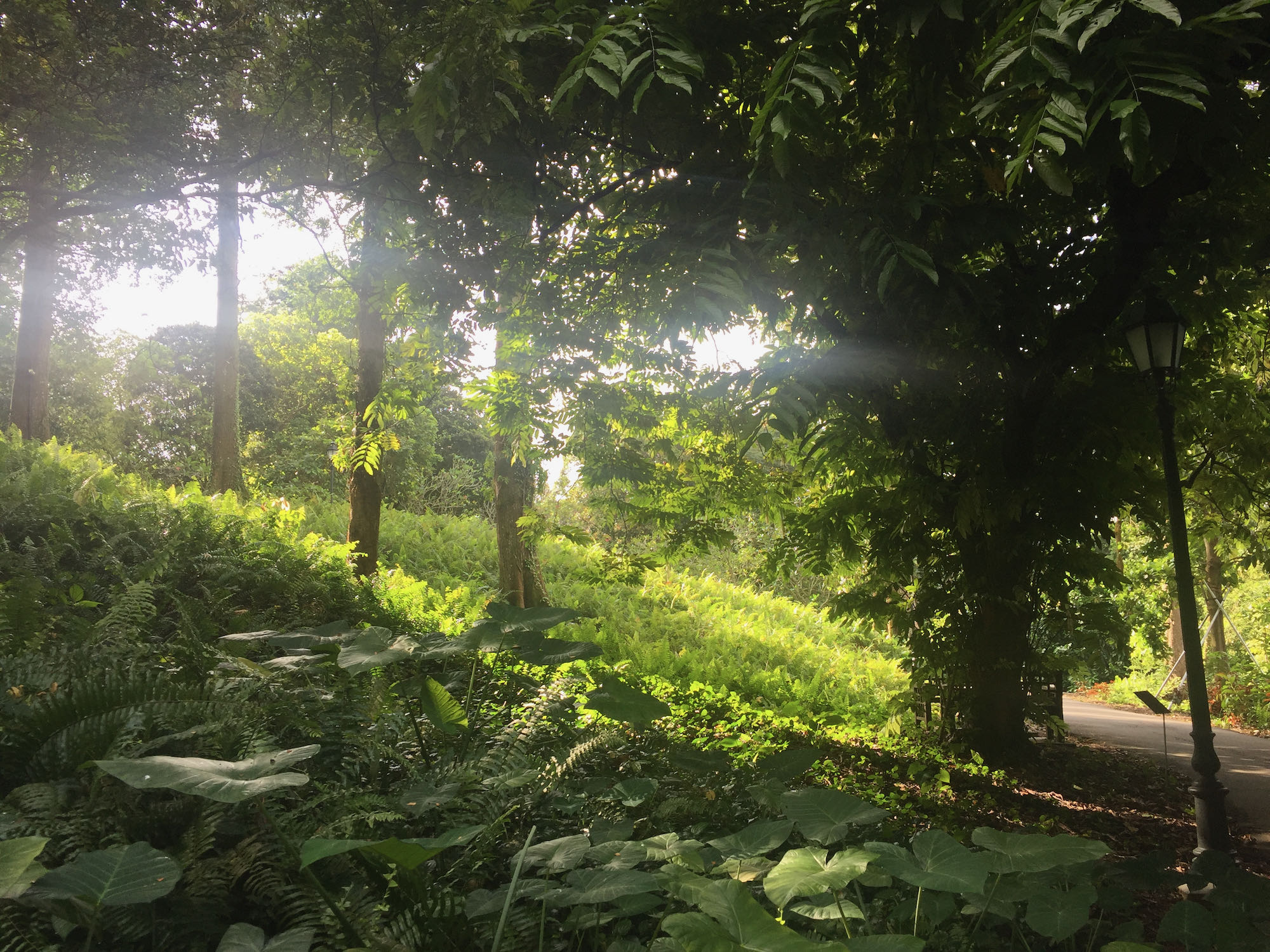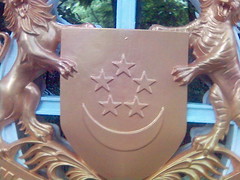在squareCircleZ上看到这个短片,非常有趣。
更有趣的是squareCircleZ指出了在这个短片里他曾经历过的日本文化。
- 一个很小的住宅或房子,里面堆满了东西
- 一大堆光盘和录像带
- 木地板
- 蹲厕(要蹲着解决问题的)
- 日式泡浴间(日本人洗澡要先冲干净再泡一下)
- 小题大作
中国年轻人家里也很多CD、VCD、DVD,不过很少录像带。第4点跟中国比较象,不过中国开始越来越多抽水马桶了。
的确是小题大作,也确实是有创意。

小桥流水人家
在squareCircleZ上看到这个短片,非常有趣。
更有趣的是squareCircleZ指出了在这个短片里他曾经历过的日本文化。
中国年轻人家里也很多CD、VCD、DVD,不过很少录像带。第4点跟中国比较象,不过中国开始越来越多抽水马桶了。
的确是小题大作,也确实是有创意。
– Istana Open House
新加坡的总统府叫 Istana,Istana 在马来文是“宫殿”的意思。新加坡总统府开放日就叫 Istana Open House。
新加坡总统府通常在新加坡国庆节或者其它的一些重要节日期间会开放给公众参观,公众可以通过新加坡总统府的网站上查到具体开放时间。
前天是 Istana Open House,天气不错,于是就跟康康他妈带着康康去 Istana 逛了一圈。
Istana 位于新加坡商业中心乌节路的一头,就在Plaza Singapura的旁边,从外面看来并不很大。

新加坡国徽(Singapore national emblem)
开放日对新加坡本地人免费,对外地人收新元一块。其实并没有人查证件,基本上是自觉交费。
新加坡政府提倡艺术,很多地方都可以见到小型的艺术展,总统府也不例外。
这样的草坪令人心旷神怡。
整个总统府位于闹市中心,占地约100英亩。
世界杯过了,离北京奥运还有两年。和朋友闲聊的时候谈起中国有什么运动有机会入选奥运正式项目。听说武术比赛过了北京奥运就要撤,没有什么希望。想来想去,赛龙舟似乎有戏。
原以为龙舟是中国独有的,谁知道朋友从印度卡拉拉邦(Kerala)旅游回来告诉我,印度也有龙舟赛。
朋友没有照到印度龙舟,只好在Flickr上找了一些照片充数。
根据卡拉拉的旅游网介绍,他们管龙舟赛叫做Vallom Kallies,龙舟叫Snake Boat(蛇舟)。龙舟赛是为庆祝一个叫Onam的丰收节而举办的。
他们也有一段关于龙舟的神话故事。
The stately snake boats of Aranmula form part of a hoary temple ritual. In days gone by, it is said, bandits once plundered a small boat carrying offerings to a Krishna temple. Lord Krishna, goes the legend, appeared before the distraught devotee in a dream and advised him to build larger boats which, when rowed by a hundred to hundred and fifty oarsmen, could glide swiftly and outstrip any pirate, and so the speedy chundan or snake boat was designed. This legend forms the basis for the snake boat races and boat festivals of Kerala.
原来印度龙舟是按照神旨托梦造来打强盗的,跟咱们屈原的版本有所不同。
仔细看一下,除了没有龙头、赛手黑一点外,印度龙舟跟中国的龙舟很像,但没有打鼓的,所以赛手划桨的节奏也不很整齐。
总体感觉一样,“人多力量大!”
“The market is picking up. Your business must be doing very well now.” I asked a businessman in a gathering.
I saw quite a number of new construction projects going on when I visited Tg. Pinnang recently. Building new houses, I reckoned it was a good indicator for local economy.
Who will build new houses without extra money? If the economy is not growing, what are these new houses for? Furthermore, new construction projects bring in more jobs for local people.
“NOOOO…” A big no and frustration, “Nobody wants to invest after the new labour law.”
The Indonesian new labour law was implemented in 2003. It went too far to protect the workers and was being abused by the workers, according to this businessman. During the time I was in Indonesia, there was some big protests against the revision of the labour law. The Indonesian government expected the revision would bring in more investment into the country.
“Oh, but I find so many new buildings in town this time.” I asked.
“That’s not because of good economic.”
Since the President Wahid (1999-2001), the Indonesian government has started loosing the restrictions on Indonesian Chinese. The Chinese communities in Indonesia are more comfortable to spend now.
This reminded me the horrible and disgusting Jakarta Riots of May 1998. Many Indonesian Chinese were killed; women were mass raped; many shops were looted and burnt. (See some pictures here. Reminder: Some of the pictures were not taken in the roit, but from other incidents of Indonesia.注意:该网上的图并不全是98年印尼暴乱的。)
Tg. Pinnang has a large percentage of ethic-Chinese; it is close to Singapore; it has not experienced any big riot during that time. In fact, it was a safe harbour to many Jakarta Chinese businesspersons.
Still, many Indonesian Chinese there are living in fear.
They have already accustomed to such fear years after years.
They just feel a little bit relief now.

Graphic from Wikipedia
Tanjung Pinang简称TG Pinang。中文音译“丹戎槟榔”或“丹戎宾南”。它是印尼廖内群岛省(Riau islands,见上图的红圈标识)的省会(Capital,位于上图靠下的红圈)。从新加坡的Tanan Merah码头买60块新元的来回票坐船过去只要两个小时就到了。
Foreigners, including Chinese, Indian, American, British, and Australian, can get a Visa-on-Arrival at the custom of TG. Pinang. (See the picture above)
The Visa fee is US$ 10 for 7 days and US$ 25 for 30 days.
That’s much more convenient for travellers. I had to pay 70 Singapore dollars and queue twice to get a visa before I came to Indonesia one year ago.
拿中国护照的可以到了印尼海关再办落地签证。10美元7天,25美元30天。挺方便的。

码头(Port)